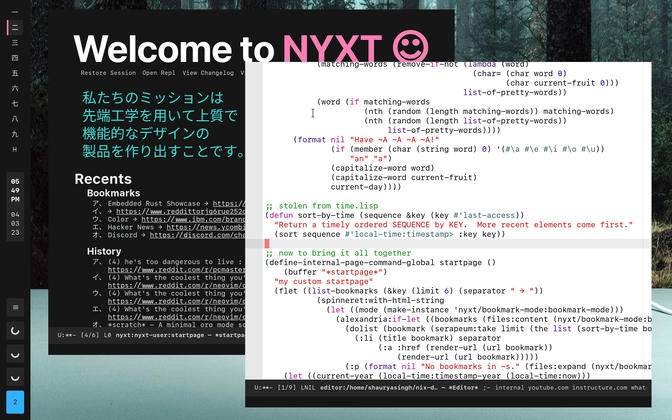
NYXT: A Lisp-Based Browser
A modern frontend for Common Lisp tasks, porting to MacOS and Retina displays, and improving FFI with graphics APIs to allow for advanced graphical manipulation.
he NYXT web browser project is a unique and ambitious undertaking that aims to create a browser that is deeply integrated with AI and semantic document tools. The goal of NYXT is to provide users with a powerful and extensible platform for processing and understanding information from the web.
One of the key shortcomings of Emacs Lisp execution is that it can be slow. This is because Emacs Lisp is an interpreted language, which means that code is executed one line at a time. This can be a problem for complex tasks that require a lot of computation.
NYXT addresses this problem by using Common Lisp as its scripting language. Common Lisp is a compiled language, which means that code is translated into machine code before it is executed. This can make Common Lisp code much faster than Emacs Lisp code.
In addition to being faster, Common Lisp is also a more powerful language than Emacs Lisp. Common Lisp has a rich set of features that can be used to implement complex tasks. This makes Common Lisp a good choice for implementing the AI and semantic document tools that are at the heart of NYXT.
The combination of Common Lisp and a web frontend makes NYXT the ideal browser for power users who need a tool that can help them process and understand information from the web. The web frontend provides NYXT with a familiar and user-friendly interface, while the Common Lisp backend provides NYXT with the power and flexibility that it needs to be a truly effective tool for knowledge work.
I have helped to port NYXT to macOS, add support for retina displays, integrate Electron support, implement tiling, and fix various bugs. I have also helped to maintain the project by reviewing code and providing feedback.
I am excited to be a part of the NYXT project and I believe that it has the potential to be a major force in the future of web browsing.